Three Lanes and Seven Alleys, also known as Sanfang Qixiang (三坊七巷), is located in Fuzhou, Fujian Province. Covering an area of about 45 hectares, this historic district consists of lanes and alleys arranged from north to south along Nanhou Street. The “Three Lanes” refer to the alleys on the left side of Nanhou Street: Guanglu Lane, Wenru Lane, and Yijin Lane. The “Seven Alleys” include Jipi Alley, Gong Alley, Anmin Alley, Huang Alley, Ta Alley, Langguan Alley, and Yangqiao Alley.
This area is characterized by narrow lanes lined with white-walled, tiled-roof houses and interconnected alleys paved with stone slabs. At the entrance of each alley, there is a stone-carved archway. One of the most distinctive architectural features of Three Lanes and Seven Alleys is the intricate decoration of the doors and windows. While the beams and columns of ordinary residences are simple and unadorned, the craftsmanship invested in the door and window carvings is remarkable. The lattice windows are exquisitely made, and the embedded wood carvings are impressively ornate, showcasing a level of artistry rarely seen in other parts of China.
The history of Three Lanes and Seven Alleys dates back to the Jin Dynasty, took shape during the Tang and Five Dynasties periods, and reached its peak during the Ming and Qing Dynasties. Today, the ancient layout and appearance of the lanes and alleys are largely preserved, making it one of the largest and best-preserved historical and cultural districts in China. It is often referred to as the “living fossil of Chinese urban lane system” and the “museum of Ming and Qing architecture.”
Nowadays, the area is bustling with traditional snack shops and artisan crafts. Visitors can explore the former residences of famous historical figures and enjoy local delicacies, making it a worthwhile destination for both cultural and culinary experiences.
Table of Contents
- Basic Information
- Location and Transportation
- Map of Sanfang Qixiang
- Highlights of Sanfang Qixiang
- Vlog about Sanfang Qixiang
- Other Attractions in Fuzhou Urban Area
Basic Information
| Estimated Length of Tour | 2 hours |
| Ticket Price | Free for public areas 80 RMB for all the paid attractions |
| Opening Hours | The area is accessible 24 hours a day throughout the year Most attractions operate from 8.30 to 17.00 |
| Telephone Number | 0086-0591-87675791 0086-0591-83890067 |
Location and Transportation
Three Lanes and Seven Alleys is located in Nanhou Street, Gulou District, Fuzhou, Fujian Province. This historical and cultural area comprises a series of lanes and alleys arranged from north to south along both sides of Nanhou Street. To get there, you can choose one of the following ways:
Bus:
- To Nanhou Street, Yangqiao Lane (Road): Take bus numbers 5, 18, 22, 27, 55, 61, 66, 80, or 128 to Shuangpao Bridge Station.
- To Guanglu Lane: Take bus numbers 16, 18, 27, 61, 109, or 105 to the Provincial Film Company (Baimalu Guanglu Lane Entrance) Station.
- To Jipi Lane (Road), Gong Lane: Take bus numbers 1, K1, 8, 11, 20, 66, 76, 77, 80, 101, 117, or 121 to Daoshan Intersection Station.
- To Langguan Lane, Anmin Lane, Huang Lane, Ta Lane: Take bus numbers 1, K1, 8, 11, 20, 66, 76, 77, 80, 101, 117, or 121 to Nanjie Station.
Metro:
- To the northeast corner of the area: Take metro line 1 or 4, get off at Dongjiekou Station (东街口站), and get out of the station from Exit C.
- To the southeast corner of the area: Take metro line 1 or 2, get off at Nanmendou Station (南门兜站), and get out of the station from Exit S4.
- To the northwest corner of the area: Take metro line 4, get off at Ximen Station (西门站), and get out of the station from Exit D.
Map of Sanfang Qixiang

Highlights of Sanfang Qixiang
Three Lanes of Sanfang Qixiang
Yijin Lane (衣锦坊)

Yijin Lane, the first of the “Three Lanes,” was formerly known as Tongchao Alley. During the Song Dynasty, it was called “Lujin,” which was later changed to “Yijin” during the Ming Dynasty. Both names reflect the success of individuals from the area who became high-ranking officials and returned home in glory. The original name “Tongchao” indicated that the alley was part of a water network area, where the tides from Fuzhou’s West Lake and South Lake could reach the channels in this alley.
The highlight of Yijin Lane is No. 16, the residence of Qing Dynasty scholar Zheng Pengcheng. The most notable feature here is the Yijin Lane Waterside Pavilion Theater. This wooden structure, a single-story platform with four pillars, overlooks a clear pond, separated by a courtyard. The front of the theater is a loft, providing a unique setting for watching theatrical performances with clear water, clear air, and clear sound. This theater is an excellent example of acoustic and aesthetic design, making it a rare and valuable piece of Fuzhou’s architectural heritage.
Wenru Lane (文儒坊)

Wenru Lane, the second of the “Three Lanes,” has existed since the Song Dynasty. According to historical records, it was initially named Rulin Alley, as it was the residence of Song Dynasty scholar-official Zheng Mu, who held the position of Guozijian JiJiu (Head of the Imperial Academy), a high-ranking official role. The lane was renamed Wenru Lane in his honor.
Notable historical figures associated with Wenru Lane include Ming Dynasty anti-piracy general Zhang Jing and Qing Dynasty generals Gan Guobao, who served as Fujian Commander-in-Chief and Taiwan Garrison Commander.
In Wenru Lane, there is a quiet and secluded alley called Minshan Alley, colloquially known as “Three Officials Hall.” This name originates from an ancient temple in the alley dedicated to the Three Officials, which added to the area’s cultural and historical significance.
Guanglu Lane (光禄坊)

Guanglu Lane is the third of the “Three Lanes.” Originally named Yuchi Mountain, it is one of Fuzhou’s “Three Hidden Mountains.” Historically, Guanglu Lane was home to the Faxiang Courtyard, commonly known as “Minshan Baofu Temple,” which is now located within Guanglu Lane Park. Fuzhou prefect Cheng Shimen, who served as a Guanglu Minister, frequently visited this temple to recite poetry. In gratitude, the monks engraved the words “Guanglu Recital Terrace” on a stone. To thank the monks, Cheng Shimen composed a poem: “Happy to come alone in the eternal shade, the wild monk inscribed ‘Recital Terrace’ on the stone. No poem compares to Yan Guanglu, I remember and return every time I climb.” Hence, the lane got its name from this historical anecdote.
Guanglu Lane has also been home to many notable figures. During the late Ming Dynasty, the lane was inhabited by scholar and painter Lin Youtai, academic examiner Sun Changyi, and education official Xu Zhi. The Xu family had multiple generations of poets and artists, including Xu You, Xu Bin, Xu Yu, Xu Ding, Xu Jun, Xu Liangchen, and Xu Jinchen. During the Kangxi period of the Qing Dynasty, the brothers Lin Tong and Lin Ji also lived here. Today, Guanglu Lane preserves several historical buildings, such as the spacious and bright Liu Family Courtyard (now a provincial cultural relic), the rustic wooden residence of Huang Ren from the late Ming Dynasty, the high-walled and narrow Zaoti Alley, and the old Foting Bridge paved with Ming Dynasty stones.
Seven Alleys of Sanfang Qixiang
Yangqiao Alley (杨桥巷)
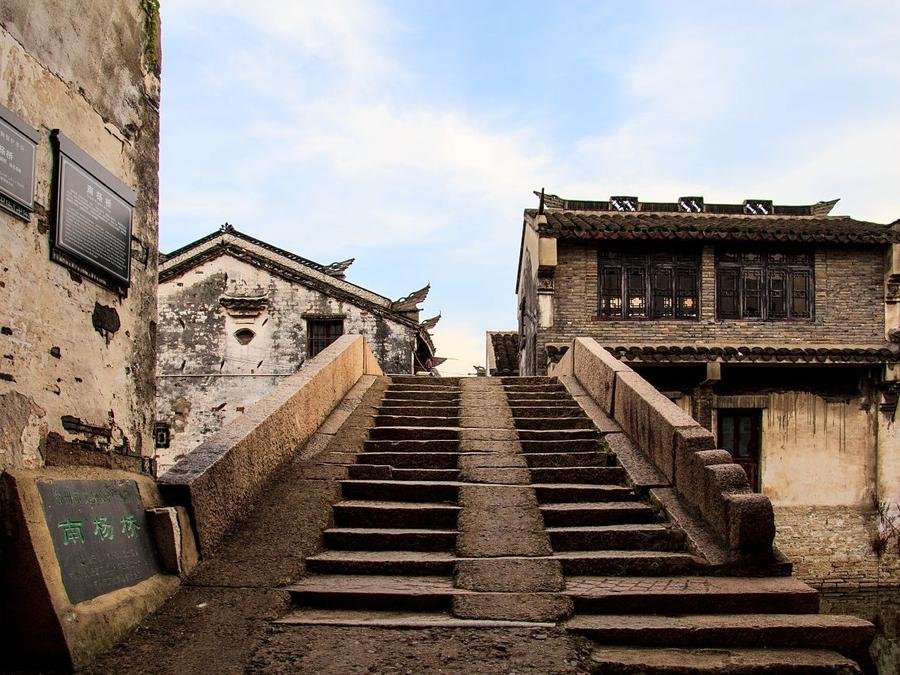
Yangqiao Alley is the northernmost of the “Seven Alleys.” Originally named Dengjun Lane, it was renamed due to its connection to the Yang Bridge in the west. During the Republic of China era, urban construction led to its expansion into a road, and it was subsequently renamed “Yangqiao Road.” At the intersection of Yangqiao Road and Nanhou Street stands the former residence of martyr Lin Juemin, which was later purchased by the grandfather of the writer Bing Xin, Xie Luanen. Bing Xin spent her childhood here, vividly describing her hometown in “My Hometown.” Although the alley was expanded into a road, significant portions of Lin Juemin’s and Bing Xin’s former residences have been preserved.
Yangqiao Alley (South) is also home to the “Double Throw Bridge,” a small bridge with a legendary past. Firstly, it is located at the confluence of two waterways, where the tidal effects are most palpable, creating an internal river phenomenon where “the tide from miles away meets in a breath.” Secondly, on either side of the bridge, a pair of banyan trees extends their branches toward each other, intertwining in the air to form a canopy. This setting has given rise to a poignant love story of a young couple, leading to the uncertainty of whether the love story inspired the trees or vice versa.
Langguan Alley (郎官巷)
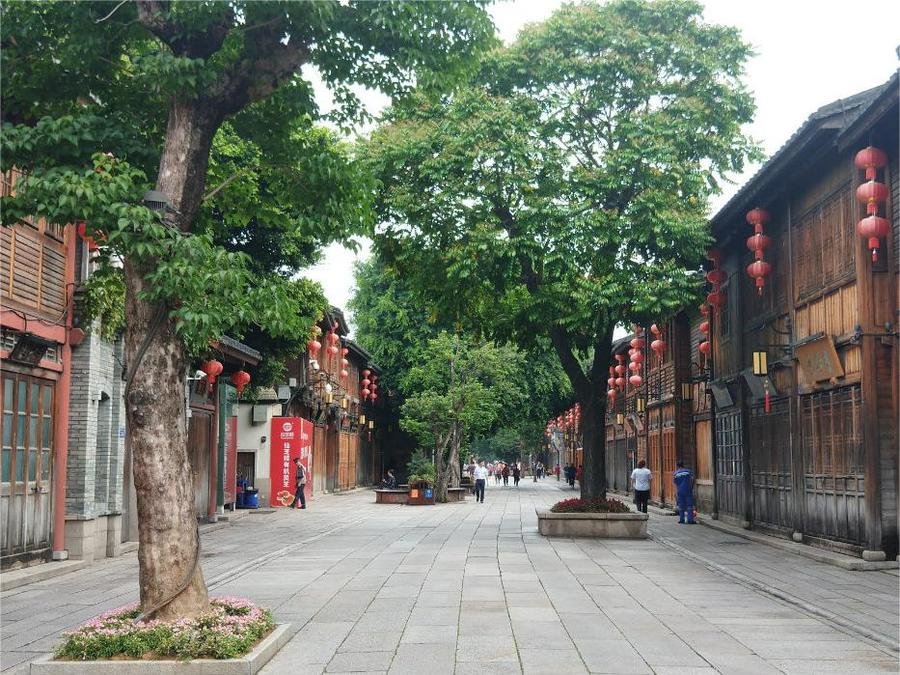
Langguan Alley, located south of Yangqiao Alley and on the east side of Nanhou Street, stretches to the bustling East Street of 817 North Road at its eastern end. The alley has been around since the Song Dynasty. According to the Qing Dynasty’s “Rongcheng Archaeological Records,” a man named Liu Tao lived here during the Song Dynasty, and his descendants served as government officials for several generations, hence the name “Langguan Alley.” The Song Dynasty poet Chen Lie, originally from Changle, also resided here when he moved to Fuzhou. Additionally, the former residence of Yan Fu, a prominent modern Chinese enlightenment thinker and translator, is located in this alley.
Ta Alley (塔巷)

Ta Alley is situated south of Langguan Alley, extending eastward to the bustling 817 North Road and westward to Nanhou Street. Historical records in the “Rongcheng Archaeological Records” indicate that the alley was formerly known as Xiuwen Alley, which was renamed Xingwen Alley by Song Dynasty magistrate Chen Su, and later renamed Wenxing Alley. It is now called Ta Alley because of the Yuwang Pagoda Courtyard built here during the Min Kingdom. The large pagoda was located at the north end of the alley, symbolizing the flourishing literary tradition of Fuzhou. The pagoda still stood in 1182 during the Southern Song Dynasty, but no further records exist.
In the Qing Dynasty, a small commemorative pagoda was built in the alley to preserve the historic site. In the 1950s, this small pagoda was moved to the entrance of the alley. Ta Alley also once had a filial piety memorial arch, erected in honor of the filial son Gao Weiyi during the Ming Dynasty.
Huang Alley (黄巷)

Huang Alley is situated south of Ta Alley, spanning across Nanhou Street and linking with Yijin Lane to the west and east. According to Min records, during the Yongjia period of the Jin Dynasty (308 AD), a man named Huang Yuanfang fled chaos in his homeland and settled in Nanhou Street, Fuzhou, giving the alley its name. By the end of the Tang Dynasty, another notable figure, the scholar Huang Pu (837–920 AD), retired to live here.
When Huang Chao’s army entered Fuzhou, they had such high regard for Huang Pu that they commanded their soldiers to pass through Huang Alley silently at night, without disturbing his family. This event significantly boosted the alley’s reputation. Throughout history, the alley has been home to many scholars and cultural figures, becoming a hub of literary and social elites. Notable residents included Qing Dynasty magistrate Lin Wenying, scholar Lin Zhichun, provincial governor Li Fu, couplet master Liang Zhangju, and Jinshi (presented scholar) Chen Shouqi and Zhao Xin. The alley was briefly renamed Xinmei Lane and later called Xinmei Li.
Anmin Alley (安民巷)

Anmin Alley is located south of Huang Alley, across Nanhou Street from Wenru Lane. It was formerly known as Xilei Lane. The name “Anmin,” meaning “Pacifying people,” is tied to Huang Chao’s entry into Fujian. According to the Fuzhou local chronicles, the alley received its name because when Huang Chao’s peasant uprising army entered Fujian, they issued proclamations of peace to the people in this alley. Historically, many residents of this alley were distinguished social figures. Jia Na, a prominent official of the Yuan Dynasty, lived here.
The western side of the alley still retains well-proportioned and rustic ancient residences. During the Second Sino-Japanese War, the New Fourth Army’s Fujian office was located in this alley. Today, this historic site is preserved as a revolutionary cultural relic protection unit.
Gong Alley (宫巷)
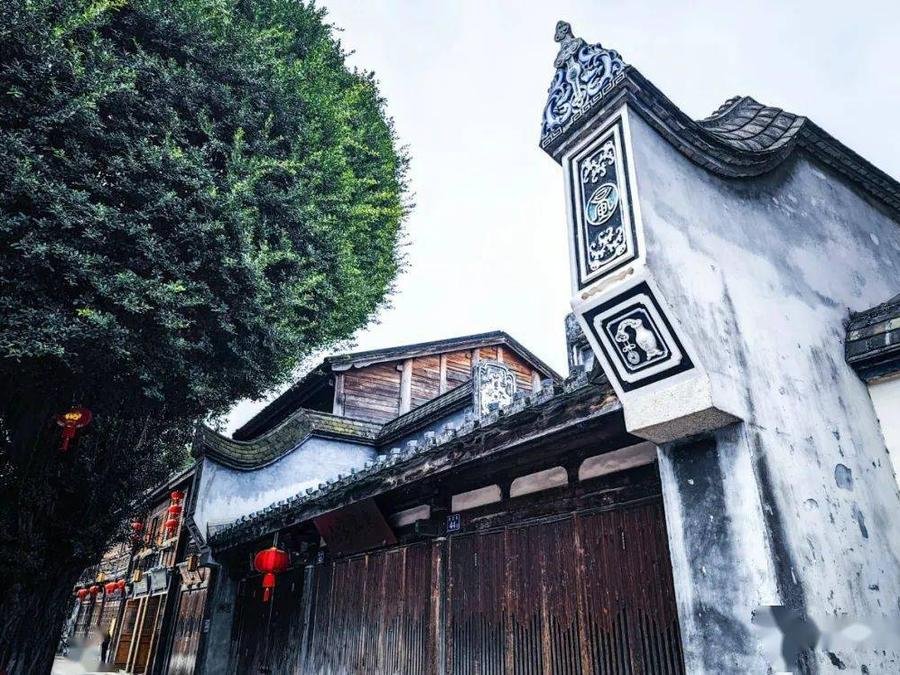
Gong Alley is situated south of Anmin Alley, connecting both 817 North Road on one end and Nanhou Street on the other. This alley is renowned for its grand and intricately designed mansions. The interior wood and stone carvings of these residences are particularly notable, leaving modern observers in awe. The intricate lattice windows, created with meticulous hollow carvings and mortise and tenon joints, form rich decorative patterns through carefully arranged wooden grids. Additionally, the wooden structures such as beams, pillars, and brackets often feature detailed carvings. Exquisite stone carvings can also be found on column bases, steps, door frames, and decorative columns. Gong Alley stands as a comprehensive showcase of ancient Fuzhou architectural artistry.
Jipi Alley (吉庇巷)
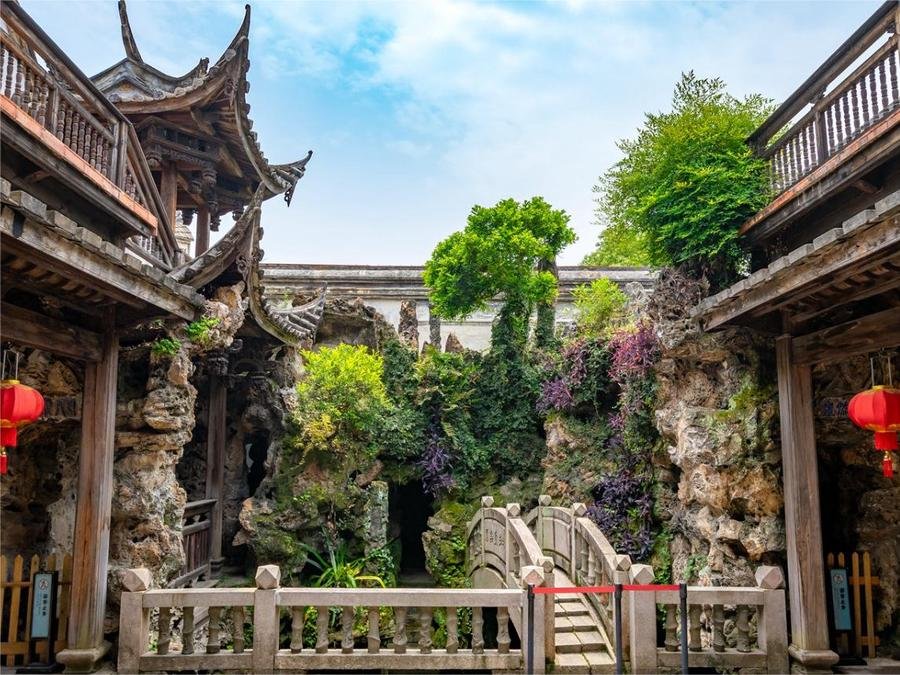
Jipi Alley, also known as “Ji Bi Alley,” is one of the lanes in Sanfang Qixiang. Its name has an interesting origin. During the Song Dynasty, Zheng Xingzhi returned home as a top scholar (Zhuangyuan) after achieving the highest honors. The residents of the alley, who had previously mistreated him, hurried to avoid him, giving the alley its original name “Ji Bi Alley,” meaning “hurry to avoid.” Later, in the Ming Dynasty, the name was changed to “Jipi Alley” to convey auspiciousness and good fortune through a homophonic alteration.
With the advent of economic reforms and the open policy, Jipi Alley transformed into a major east-west thoroughfare and was temporarily renamed “Jipi Road.” In 2009, the Fuzhou government restored the alley’s original name and began renovations on the damaged historical buildings on its northern side.
Nanshou Street (南后街)
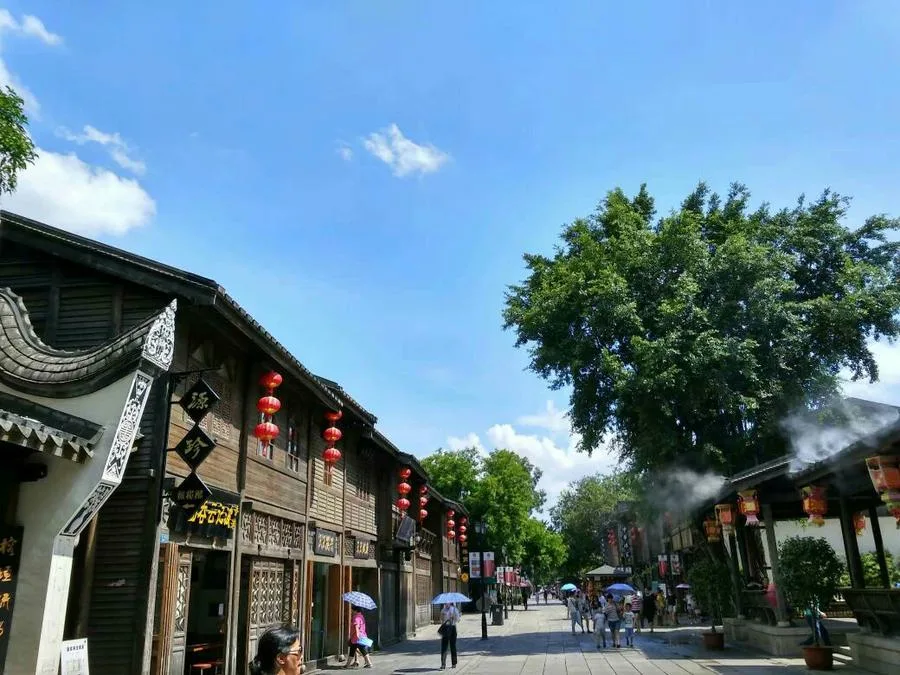
Nanhou Street, the central axis of Fuzhou’s Sanfang Qixiang, stretches approximately 1,000 meters from Yangqiao Road in the north to Aomen Bridge in the south. On its east side are the Seven Alleys, and on its west side are the Three Lanes. Historically, Nanhou Street has been a bustling commercial hub since the rise of Sanfang Qixiang through the Republican era.
It provided everything needed for daily life, including groceries, rice, oil, and other essentials across 36 different trades. Additionally, there were specialized shops catering to intellectuals, such as book engraving studios, second-hand bookstores, and framing shops. The street also hosted vibrant lantern markets during the Lantern Festival and Mid-Autumn Festival. The cultural significance of Nanhou Street was highlighted by late Qing Dynasty scholar Wang Guorui, who compared it to Beijing’s Liulichang, a famous cultural street outside Zhengyangmen, underscoring Nanhou Street’s historical and cultural atmosphere.
During the Ming and Qing dynasties, Nanhou Street retained its charming character with white walls, black tiles, and stone-paved roads, flanked by bustling shops. In the Republican era, the street was widened and upgraded to an asphalt road, reflecting its continued importance as a commercial and cultural center.
Various Themed Museums
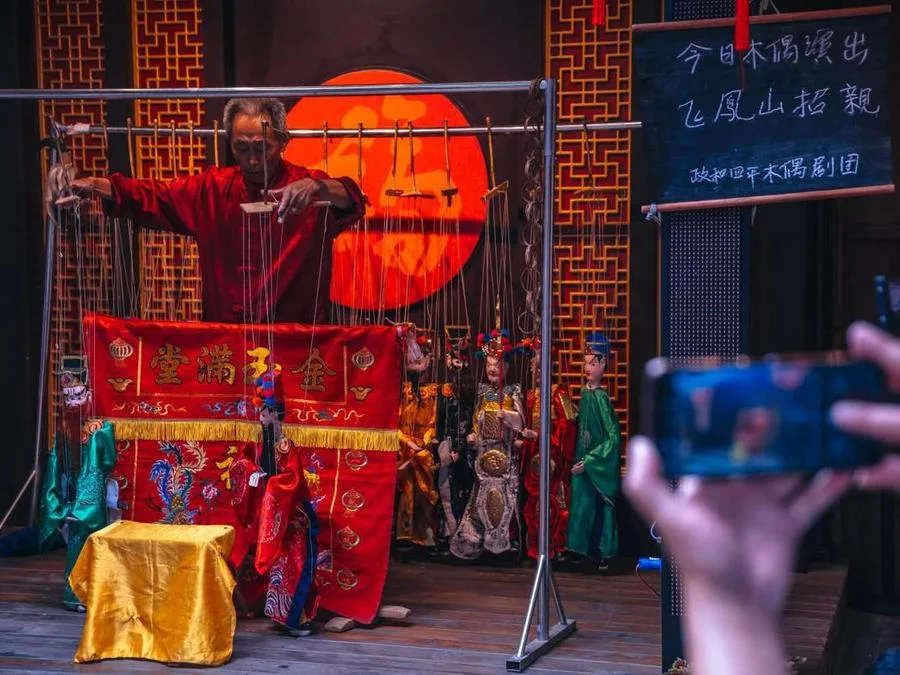
Sanfang Qixiang is also home to several significant museums that showcase the rich heritage of the region.
Liu Family Compound: Located at 28, 30, 32, and 34 Guanglu Fang, the Liu Family Compound is a nationally protected cultural site. It now serves as the central exhibition hall for the community museum. This museum highlights the architectural and cultural history of the area, offering visitors insight into the lifestyle of past residents.
Ermei Ancestral Residence: Designated as a national key cultural relic protection unit in 2006, the Ermei Ancestral Residence currently operates as the Fujian Folk Museum. This museum displays nearly a thousand folk artifacts from Fujian province. Through immersive exhibits, it recreates the daily life scenes of Ming and Qing Dynasty residents in Fuzhou, celebrating the region’s rich traditions.
Ye Family Residence: In 2009, the Fujian Provincial Government designated the Ye Family Residence as a permanent exhibition center for Fujian’s intangible cultural heritage. This museum exhibits over a thousand items, promoting and preserving the province’s diverse intangible cultural heritage. Visitors can explore the vibrant traditions and cultural practices that have been passed down through generations.









Today, I visited Sanfang Qixiang, which was quite beautiful. However, there were too many people. I left a cup of milk tea on a chair while I went to the restroom, and it was thrown away by the staff. I felt pretty speechless about that.
The wisteria flowers are blooming beautifully in Sanfang Qixiang! They are truly stunning.
Today is Wednesday, and the streets are unusually crowded! I didn’t have enough fun and didn’t manage to buy any tasty food. I’m feeling disappointed!
Traveling during off-peak times didn’t help avoid the crowds in the Sanfang Qixiang area. In contrast, the number of people in the Shangxiahang Cultural District was much fewer.
In addition to the renowned Love Tree, the architecture of Sanfang Qixiang is also quite distinctive, blending traditional Central Plains style with Jiangnan architectural features and local characteristics of Fuzhou. Among these, the Saddle Wall is one of the most unique architectural elements. The walls rise and fall in a streamlined shape along with the wooden framework, with the eaves extending outwards resembling a saddle. Both the wall tops and eaves are adorned with clay sculptures and paintings, creating a… Read more »
I visited Sanfang Qixiang which is great for strolling and taking photos. I saw Fuzhou’s “Heart Tree”, although right now it looks a bit like a “Butt Tree”.
Walking horizontally in Sanfang Qixiang represents history, while walking vertically represents commerce. Recently, due to the photography contest featuring Fuzhou’s ancient buildings being held at Xiaohuang Lou (小黄楼), the venue has been open free of charge during the exhibition.
Several tea shops in Sanfang Qixiang have staff dressed in traditional clothing, playing musical instruments, and wearing sunglasses. It’s a mix of Chinese punk culture, and many people were taking photos.